Freezing meat properly helps maintain its quality and safety for months or even years. Here’s what you need to know:
- Freezer Temperature: Keep your freezer at 0°F (-18°C) or lower to stop bacterial growth and preserve meat quality.
- Packaging: Vacuum sealing offers the best protection, keeping meat fresh for up to 2–3 years. If vacuum sealing isn’t an option, double-wrap meat using plastic wrap and freezer bags or freezer paper for 6–12 months of storage.
- Portioning: Divide meat into meal-sized portions before freezing to save time and reduce waste.
- Labeling: Clearly mark packages with the type of meat, weight, and freezing date. Organize using the FIFO (First In, First Out) method.
- Thawing: The safest method is refrigerator thawing, which keeps meat below 40°F. For faster thawing, use the cold water method or a microwave, but cook immediately after.
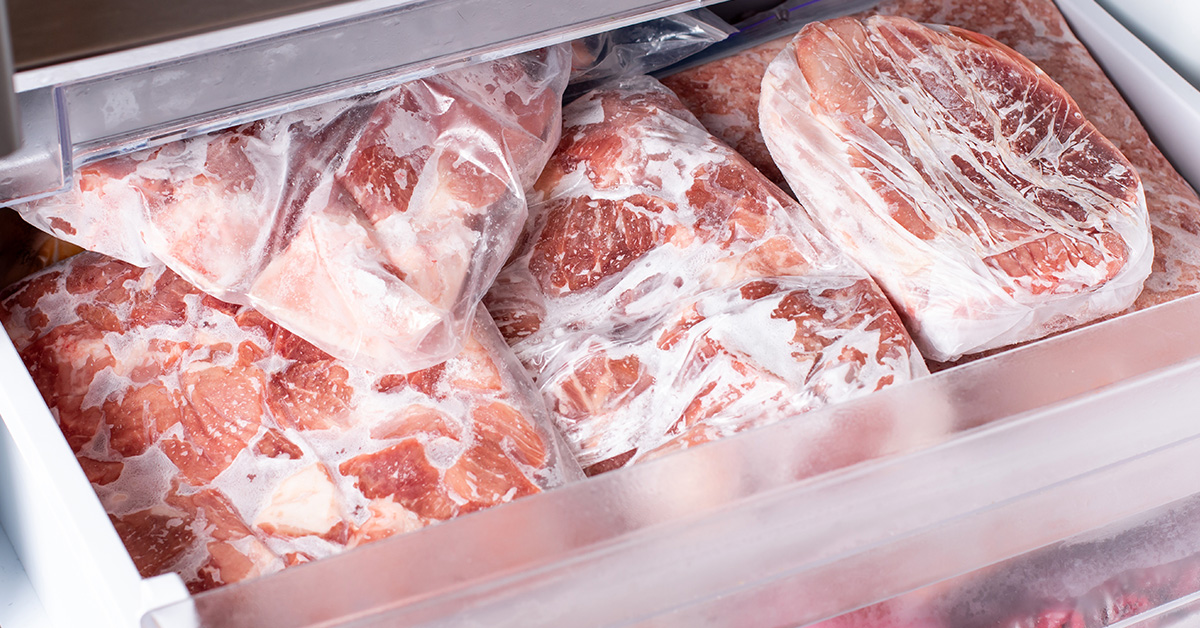
Following these methods prevents freezer burn, extends storage life, and ensures your meat stays flavorful and safe to eat.
Basic Freezer Storage Practices for Meat
Proper Freezer Temperature Settings
Keeping your freezer at the right temperature is key to storing meat safely. Set it to 0°F (-18°C) or lower and ensure it stays consistent. This temperature halts bacterial growth, preserving both the quality and flavor of your meat over time.
Don’t just trust the freezer’s built-in display – place a thermometer inside, nestled among frozen items, and wait 5–8 hours for an accurate reading. If it’s not at 0°F, adjust the settings and check again after a few hours. Regular checks help ensure your meat stays safe and maintains its texture.

Be mindful of temperature fluctuations. Avoid opening the freezer door too often or overloading it with warm items, as these actions can raise the internal temperature. A steady 0°F keeps your meat safe, although its quality may naturally diminish over time.
Portioning Meat Before Freezing
Prepping your meat into meal-sized portions before freezing is a smart way to save time and minimize waste. Instead of freezing a large roast or bulk pack of chicken breasts all together, divide them into portions that match the size of your typical meals.
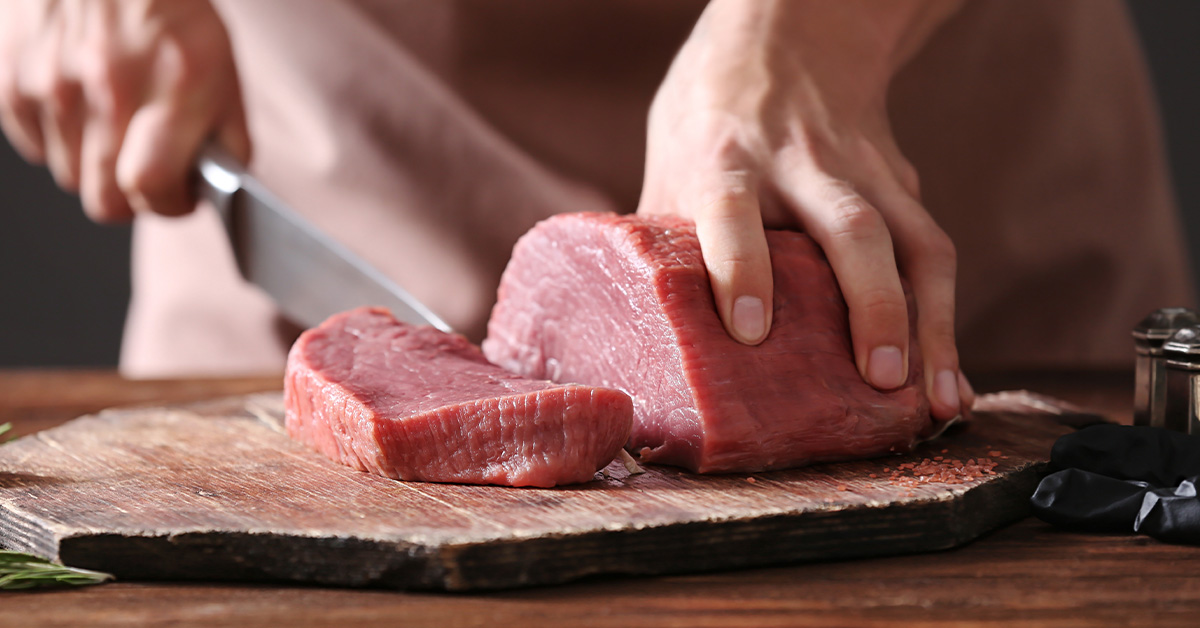
For ground meat, try placing 1-2 pound portions into freezer bags and flattening them completely. This method not only speeds up freezing and thawing but also saves freezer space. You can stack these flattened bags upright, like books on a shelf.
If you’re freezing individual cuts, wrap them separately so you can thaw only what you need. This avoids the hassle of defrosting more than necessary and eliminates the need to refreeze unused portions, which can impact quality.
Labeling and Organizing Frozen Meat
Once your meat is portioned, clear labeling and organized storage make a big difference. Use a permanent marker to label each package with the type of meat, its weight, and the date it was frozen. This helps you quickly identify what’s inside without unwrapping and keeps track of how long it’s been stored.
Follow the FIFO (First In, First Out) method by placing newer packages behind older ones. This system ensures you use items within their best quality window and prevents forgotten packages from languishing in the back of the freezer.

To avoid cross-contamination, organize your freezer by food type. Place ready-to-eat items at the top, followed by cooked meats, raw steaks and pork, raw ground meat, and raw poultry at the bottom. This setup keeps any juices from raw meat from dripping onto foods that require less cooking.
Using bins or baskets can also help. Group similar items – like ground meat, steaks, or poultry – together in designated sections. This not only simplifies meal planning but also helps you maintain a clear inventory and rotation system.
How to Wrap and Freeze Meat with No Vacuum Packing
How to Package Meat for Freezing
Storing meat properly in the freezer is essential to maintain its quality and avoid freezer burn. One of the best ways to achieve this is through vacuum sealing. This method removes air from the packaging, which helps preserve the meat’s texture and flavor for a longer period.
Wild Country Meats‘ Vacuum-Sealed Packaging
Wild Country Meats uses vacuum-sealed packaging to protect its meat bundles from air exposure, which minimizes freezer burn and extends shelf life. This process is paired with a detailed traceability system where every animal is tagged, photographed, and inventoried. This professional approach ensures high-quality meat that’s ideal for long-term freezer storage.
Packaging Meat at Home for Freezing
If you’re buying meat from the counter or need to repackage store-bought meat, the original packaging isn’t suitable for freezing. It doesn’t provide enough protection against freezer burn. Here’s how you can package meat for freezing at home:

- Step 1: Remove the original packaging and pat the meat dry. Wrap it tightly in plastic wrap or freezer paper.
- Step 2: Double-wrap the meat by first using plastic wrap or freezer paper, then sealing it with aluminum foil or placing it in a freezer bag. This creates an extra barrier against air exposure.
- Step 3: For short-term storage, use heavy-duty freezer bags and press out as much air as possible before sealing.
- Step 4: Label each package with details like the cut, quantity, and date.
- Step 5: Lay the packages flat in a single layer on the lowest shelf of the freezer. Once frozen, you can stack them for better organization.
By following these steps, you can reduce the risk of freezer burn and extend the storage life of your meat.
Packaging Methods Comparison
Different packaging methods provide varying levels of protection and convenience. Here’s a quick breakdown:
| Method | Freezer Burn Prevention | Ease of Use | Shelf Life |
|---|---|---|---|
| Vacuum Sealing | Excellent | Moderate (needs special equipment) | Longest (up to 2–3 years) |
| Double-Wrapping | Good | Easy | Moderate (6–12 months) |
| Freezer Bags | Good | Easy | Moderate (6–12 months) |
Vacuum sealing is the most effective option, offering the longest shelf life and the best protection against freezer burn. For instance, vacuum-sealed beef can remain in excellent condition for 2–3 years. In comparison, beef stored in freezer bags is best consumed within 6–12 months.
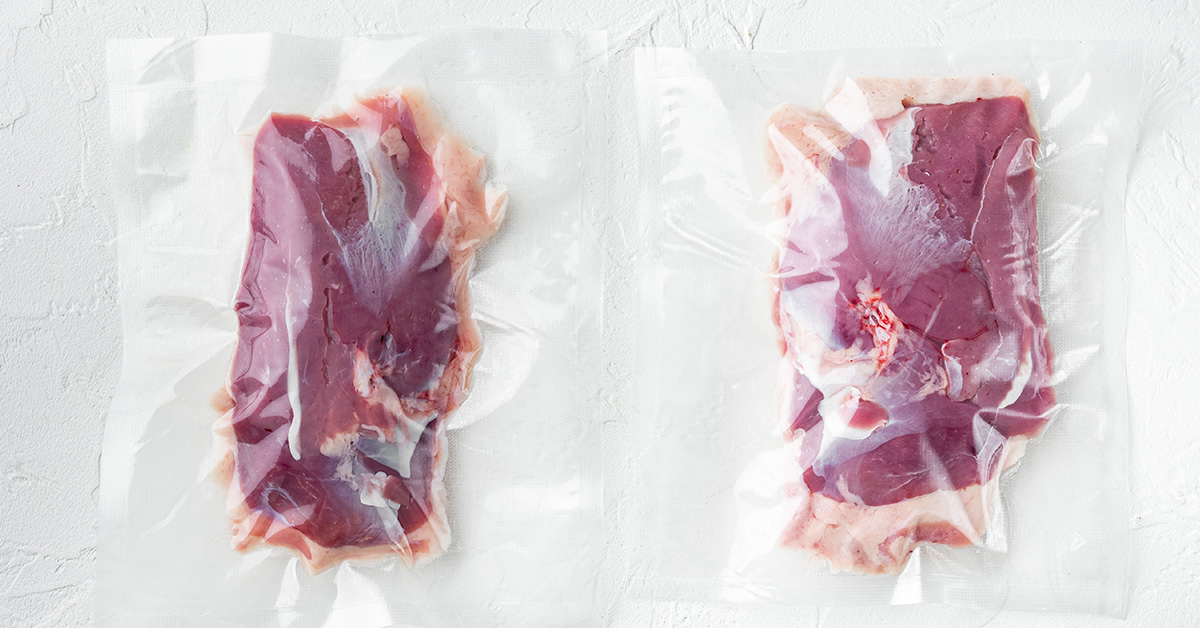
Regardless of the method you choose, the key is to eliminate as much air as possible. Freezer burn happens when air comes into contact with the meat’s surface, leading to dehydration and oxidation. This can cause dry patches and off-flavors. By selecting the right packaging method based on your storage needs, you can keep your frozen meat fresh and safe for longer.
sbb-itb-5ae85c5
How Long Meat Lasts in the Freezer
Understanding how long different types of meat can last in the freezer helps you plan meals better and cut down on waste. While freezing at 0°F keeps meat safe indefinitely, its quality – like flavor and texture – can decline over time.
USDA Storage Time Guidelines
The USDA provides recommendations for how long meat stays at its best in the freezer. These guidelines focus on preserving quality rather than safety.
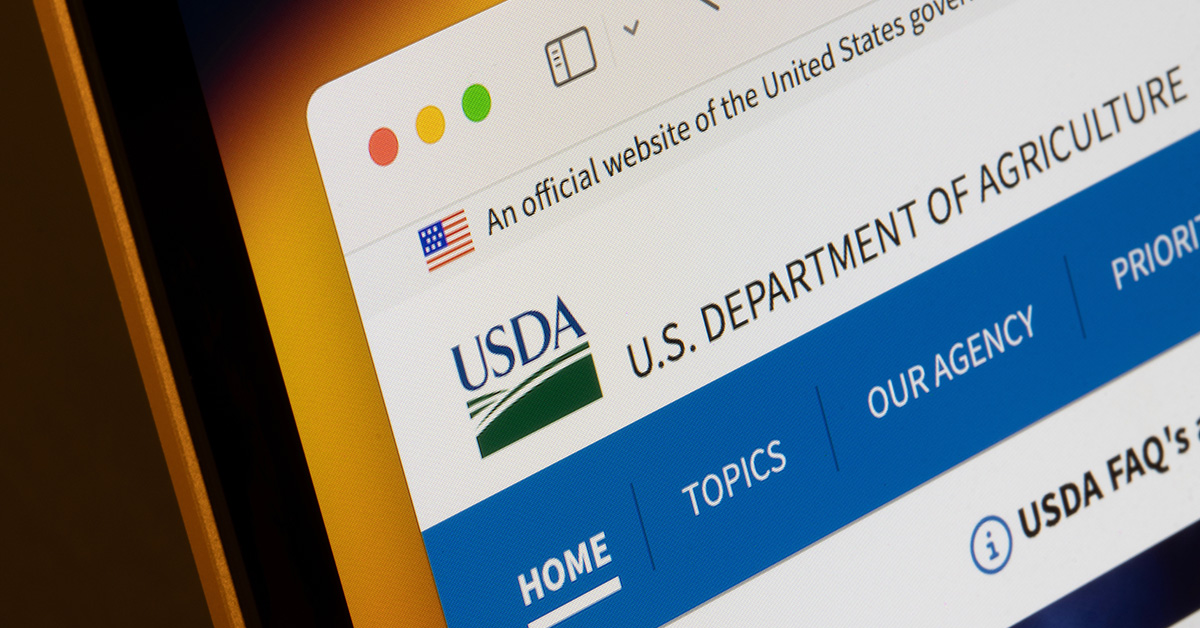
Beef has some of the longest freezer storage times. Steaks and roasts maintain their quality for 6 to 12 months, while ground beef is best used within 3 to 4 months because its larger surface area is more prone to air exposure.
Pork has slightly shorter storage times. Pork chops are ideal for 4 to 6 months, while pork roasts can stay at peak quality for 4 to 12 months. Ground pork, like ground beef, should be consumed within 3 to 4 months.
Poultry storage depends on whether it’s whole or in pieces. A whole chicken or turkey can stay in top condition for up to 1 year, thanks to the protective skin, while chicken or turkey pieces are best used within 9 months.
For wild game like venison or elk, you can expect optimal quality for 8 to 12 months, which is helpful for those who store large amounts of meat after hunting season.
While these timelines help preserve flavor and texture, remember that quality will still fade over time, even though frozen meat remains safe to eat.
Quality vs. Safety in Long-Term Freezing
Freezing meat at 0°F stops bacterial growth, making it safe to store indefinitely. However, the USDA guidelines emphasize maintaining quality rather than safety.
FoodSafety.gov: "Frozen foods stored continuously at 0°F (-18°C) or below can be kept indefinitely. The guidelines for freezer storage are for quality only."
Over time, meat can lose moisture, flavor, and texture. As noted by the Illinois Extension:
Illinois Extension: "Storage for a long period of time is not dangerous, but flavors and textures can deteriorate."
Vacuum sealing is one way to slow down quality loss by reducing air exposure and preventing freezer burn. For example, Wild Country Meats’ vacuum-sealed packaging helps keep their meat bundles fresh for the entire recommended storage period.
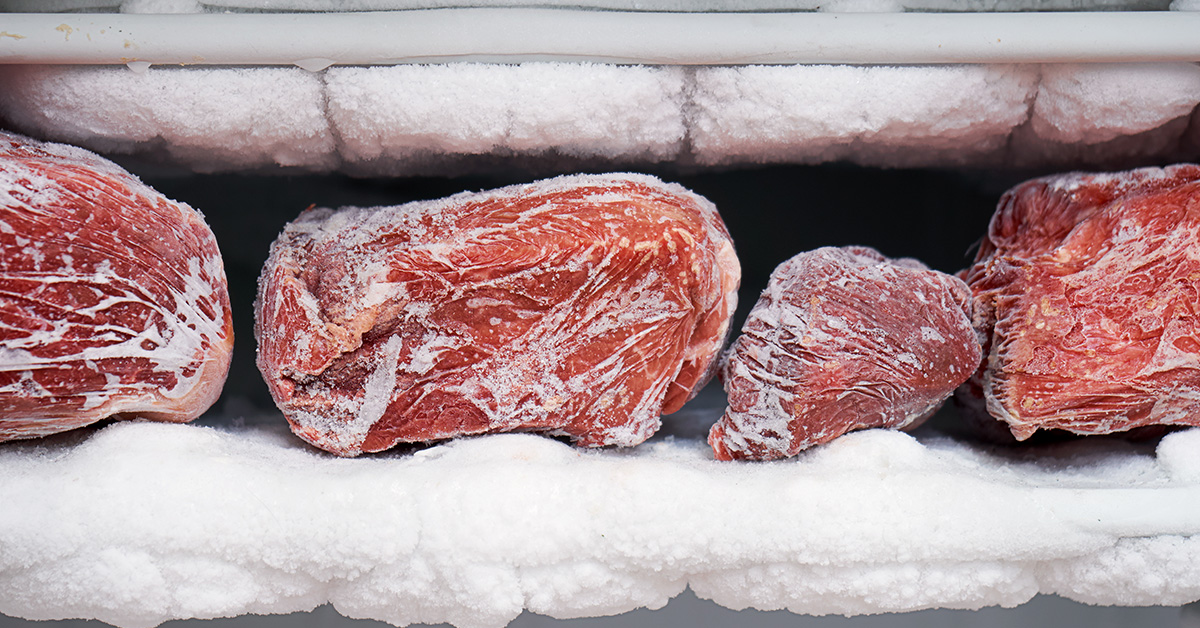
Freezer Storage Time Chart
Here’s a quick reference chart for how long different types of meat retain their best quality in the freezer:
| Meat Type | Cut/Preparation | Optimal Duration |
|---|---|---|
| Beef | Steaks, Roasts | 6–12 months |
| Beef | Ground | 3–4 months |
| Pork | Chops | 4–6 months |
| Pork | Roasts | 4–12 months |
| Pork | Ground | 3–4 months |
| Poultry | Whole | Up to 1 year |
| Poultry | Pieces | 9 months |
| Wild Game | Steaks, Roasts | 8–12 months |
| Cooked Meat | Any preparation | 2–3 months |
| Bacon/Sausage | 1–2 months |
Cooked meats, such as beef, pork, or poultry, have shorter freezer lives than raw meats. They should ideally be used within 2 to 3 months, as cooking changes the meat’s structure, making it more susceptible to quality loss. Processed meats like bacon and sausage have the shortest freezer lifespan – just 1 to 2 months – due to the curing process and added ingredients.
How to Thaw Frozen Meat Safely
Thawing frozen meat the right way is just as important as freezing and packaging it properly. The method you choose not only impacts the safety of the meat but also its quality after cooking. Let’s break down the best ways to thaw meat safely.
Refrigerator Thawing Method
The refrigerator is hands-down the safest way to thaw meat. By keeping the meat at a steady temperature below 40°F (4°C), this method prevents bacteria from multiplying. Plus, the slow thawing process helps the meat retain its texture and moisture, so it cooks up better. For larger cuts, this method ensures the meat thaws evenly, avoiding those partially frozen spots that can be tricky to deal with.

Timing is key here. Smaller cuts of meat, like chicken breasts or steaks, will usually thaw overnight. Bigger items, like a 10-pound roast, can take up to two days – about 24 hours for every 5 pounds. If you’re working with vacuum-sealed meat, like those from Wild Country Meats, leave the packaging intact while thawing to lock in quality. The bonus? If your plans change, meat thawed in the fridge can be safely refrozen, though you might notice a slight drop in moisture or texture.
If you’re short on time, other methods might work better for you.
Other Safe Thawing Methods
Need your meat thawed quicker? The cold water method is a solid option. Simply place the meat in a sealed freezer bag and submerge it in cold tap water. Change the water every 30 minutes to keep it at a safe temperature. Smaller cuts can thaw in about an hour, while larger pieces (3 to 4 pounds) may take 2 to 3 hours. Just remember: cook the meat immediately after using this method. And whatever you do, don’t use warm or hot water – it can push the meat into the danger zone (between 40°F and 140°F), where bacteria thrive.
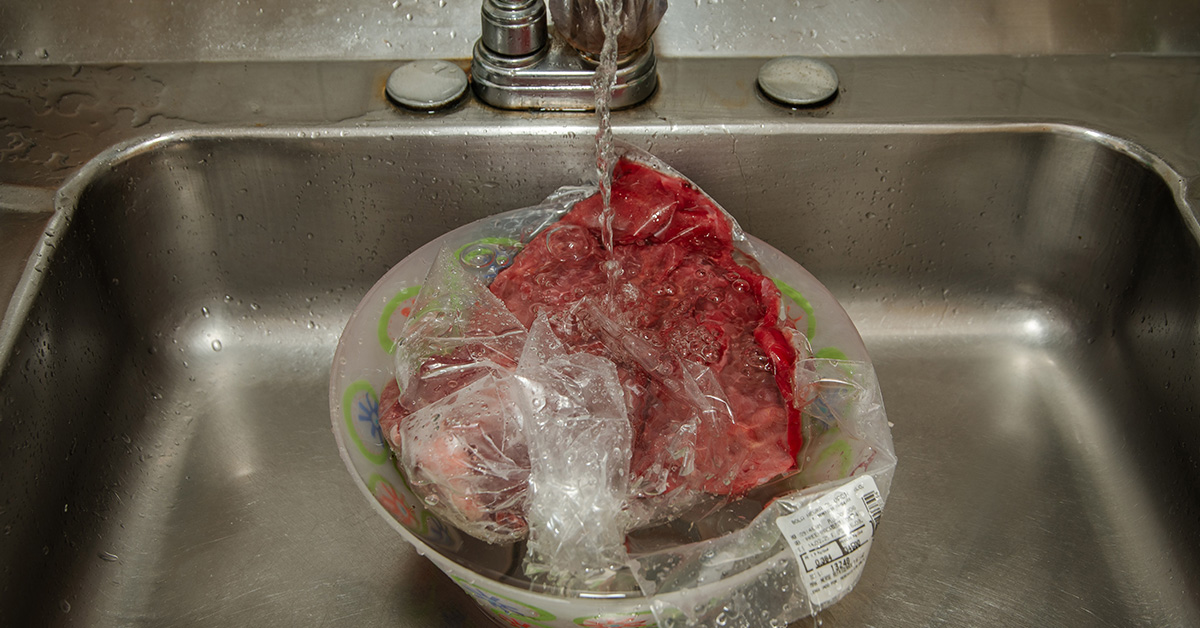
Microwave thawing is another quick choice, especially for smaller portions. Follow your microwave’s defrost settings, but be aware that microwaves can heat unevenly. Some parts of the meat might start cooking while others are still frozen, which can affect texture and safety. If you’re thawing vacuum-sealed meat, remove the packaging first to avoid any issues with non-microwave-safe materials. Like the cold water method, microwave-thawed meat needs to be cooked right away and shouldn’t be refrozen unless it’s cooked first.
Thawing Mistakes to Avoid
To keep your meat safe and delicious, steer clear of these common mistakes:
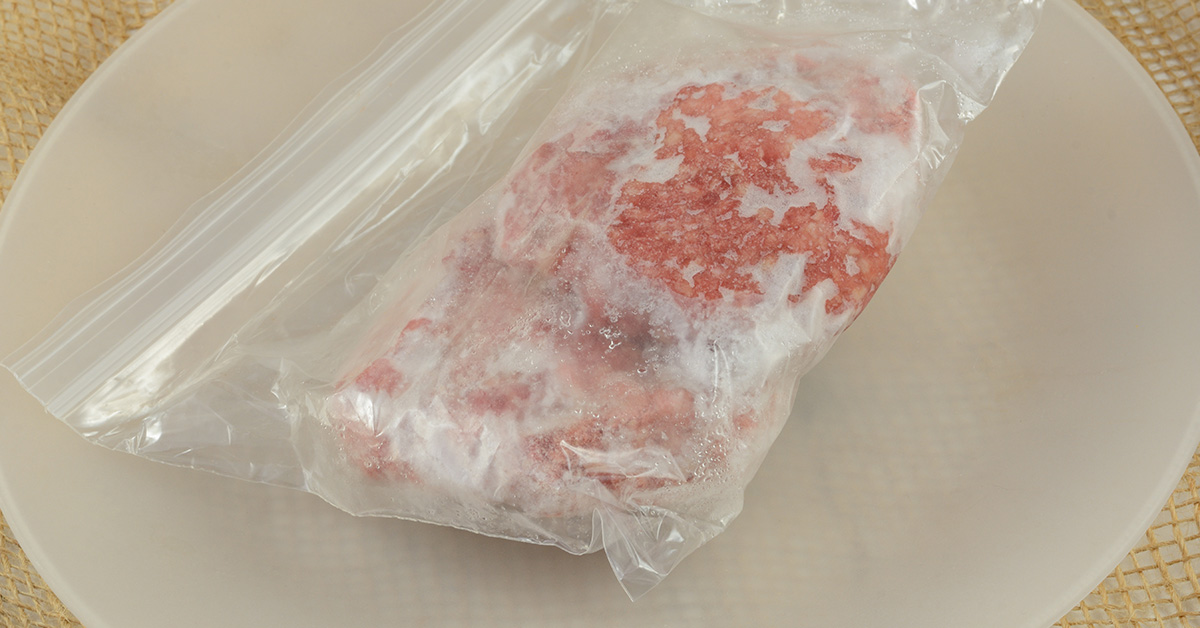
- Never thaw meat at room temperature. Leaving it on the counter can cause the outer layers to warm up past 40°F while the center stays frozen. This creates the perfect conditions for bacteria to grow, increasing the risk of foodborne illness.
- Use a container to catch drips. When thawing in the fridge, place the meat in a container to collect any juices and store it on the lowest shelf, away from foods that are ready to eat.
- Keep it sealed. If you’re using the cold water method, make sure the meat is in a leak-proof bag to prevent contamination.
- Check for signs of spoilage. If the meat smells bad, feels slimy, looks discolored, or has ice crystals, it’s best to toss it.
Lastly, don’t forget to clean and sanitize any surfaces or tools that come into contact with raw meat or its juices. Using a refrigerator thermometer to ensure your fridge stays below 40°F is also a smart move for keeping your food safe.
Key Points for Freezing Meat
Freezing meat properly is all about keeping it safe, fresh, and flavorful. Start by setting your freezer to 0°F (-18°C). This temperature halts bacterial growth and helps maintain the quality of the meat.
Using vacuum-sealed packaging is one of the best ways to fight freezer burn and extend the shelf life of your meat – similar to the approach used by Wild Country Meats for their meat bundles. If you’re packaging meat yourself after buying it at the counter, take off the store wrapping and rewrap it tightly with plastic wrap. Then, place it in a freezer bag or use freezer paper paired with aluminum foil for extra protection. Along with good packaging, portioning and labeling play a key role in keeping your freezer organized and efficient.
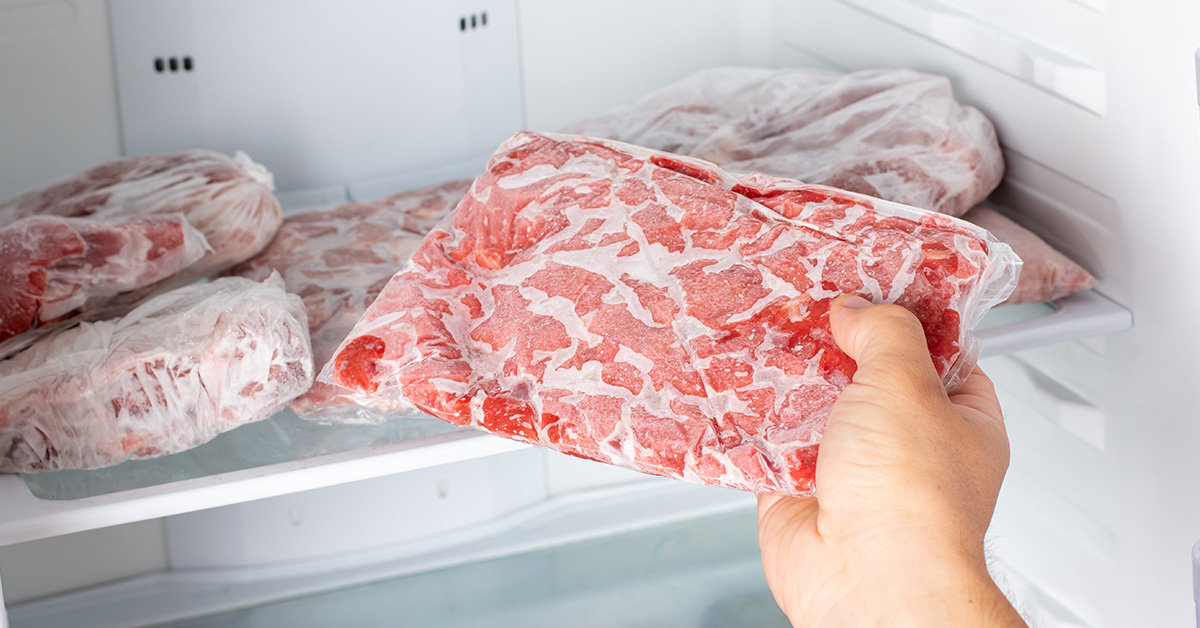
Dividing meat into meal-sized portions before freezing ensures you only thaw what you need. Clearly label each package with details like the cut, quantity, and freezing date. This makes it easier to follow the FIFO (First In, First Out) method, which helps you use older items first and retain the best quality. As a general guideline, raw ground meat should be used within 3 to 4 months, while cooked meats are best enjoyed within 2 to 3 months.
Keeping your freezer organized is just as important. Store raw meats on the lowest shelves or in specific sections to prevent juices from dripping onto other foods. Also, avoid overloading your freezer to maintain proper air circulation and consistent temperatures.
Lastly, when it’s time to thaw your frozen meat, gradual thawing in the refrigerator is the safest way to preserve its quality.
FAQs
How can I prevent freezer burn when storing meat?
To keep freezer burn at bay, it’s crucial to limit the meat’s contact with air and moisture. The most effective way to do this is by using vacuum-sealed packaging, which eliminates air and locks in freshness. Wild Country Meats provides vacuum-sealed meat bundles, so your meat stays in top condition for a longer period.
If you’re handling the packaging yourself, make sure to wrap the meat tightly using plastic wrap, freezer paper, or aluminum foil. After wrapping, place it in a freezer-safe bag or container. For short-term storage, ensure the packaging is snug and well-sealed. For long-term storage, double-wrapping or vacuum-sealing is the best way to preserve both the flavor and quality of the meat.
How does packaging affect how long meat lasts in the freezer?
Proper packaging is key to maintaining the quality and extending the shelf life of frozen meat. Using vacuum-sealed packaging is highly effective, as it removes air and protects the meat from freezer burn, keeping it fresh for a longer time. At Wild Country Meats, every meat bundle is vacuum-sealed to ensure freshness and durability.
If you’re handling the packaging yourself, make sure to use freezer-safe materials like heavy-duty aluminum foil, plastic wrap, or freezer bags. For extended storage, double-wrap the meat or opt for a vacuum sealer to reduce air exposure. Don’t forget to label each package with the date – this helps you track how long it has been stored. Properly packaged meat can typically stay safe in the freezer for 6 to 12 months.
Is it safe to eat meat that was accidentally thawed at room temperature?
No, eating meat thawed at room temperature is not safe. When meat is left in the "temperature danger zone" – between 40°F and 140°F – for over two hours, bacteria can multiply quickly. To avoid foodborne illnesses, any meat thawed this way should be thrown out.

